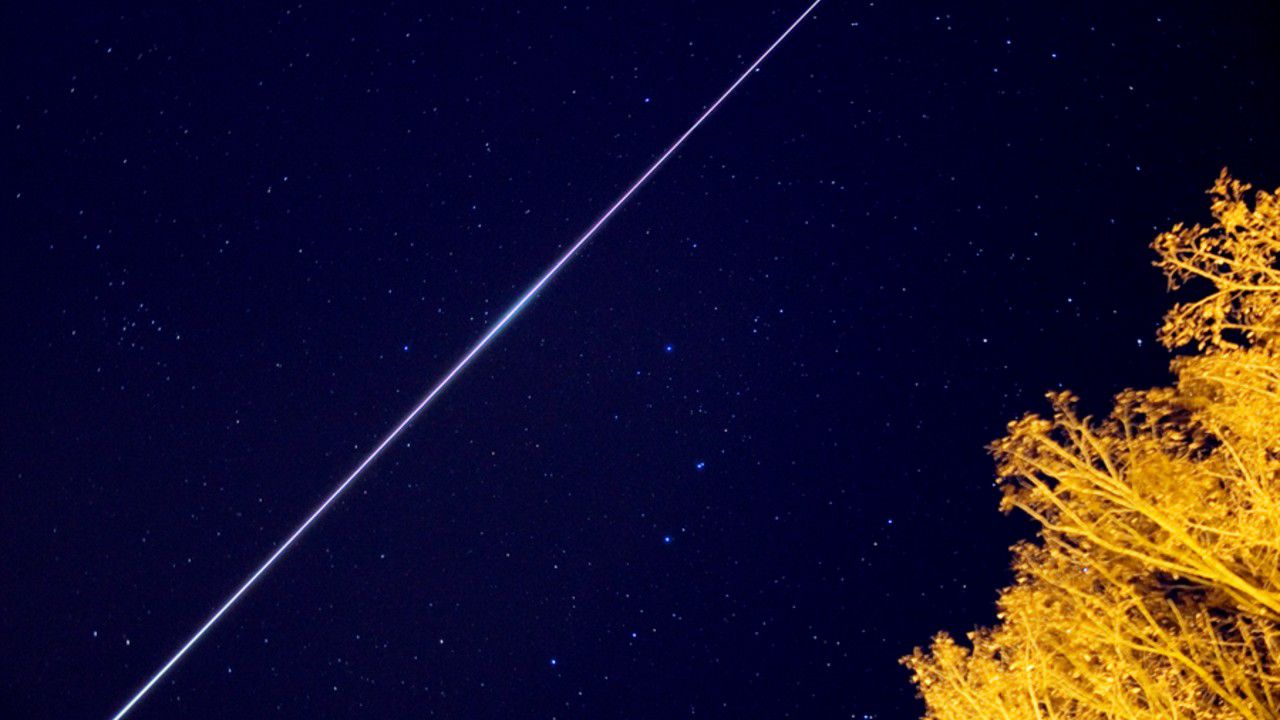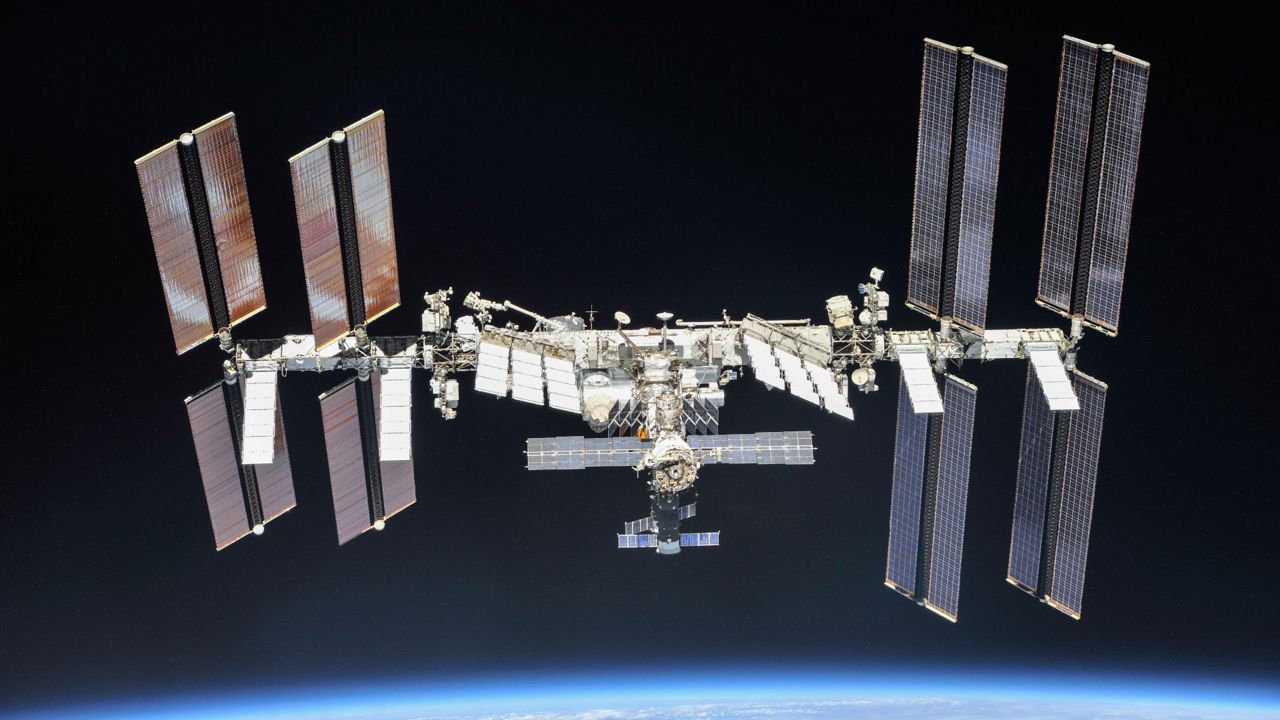The International Space Station (ISS) constantly circles the Earth and can be visible to the naked eye if you know where and when to look up.
The ISS hovers about 250 miles above the Earth's surface. It's roughly the size of a football field and is used for scientific research and to study the effects long-term spaceflight has on humans. As it travels across the night sky, it is sometimes visible to the casual observer.
The ISS circles the Earth once every 90 minutes at an incredible speed of 17,500 mph. To put that into perspective, most commercial airplanes travel at a top speed of about 600 mph.
It has been orbiting the Earth since 1998 and has had a crew living onboard for varying amounts of time for the last 15 years.
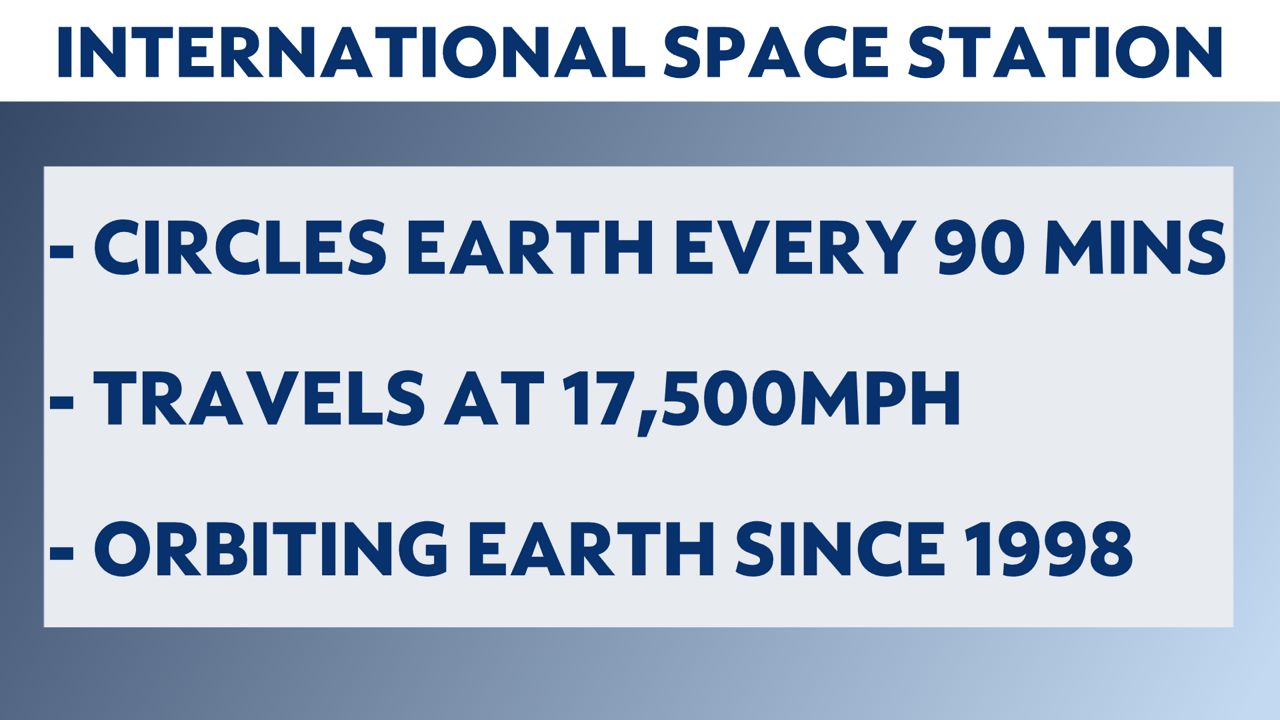
The sky has to be dark to catch a glimpse of the space station as it treks from horizon to horizon. The ISS reflects sunlight just like the moon does, but is not nearly as bright, so it will not be visible in the daytime.
It resembles a plane or a bright star, but does not have any flashing lights and is moving much more quickly. The ISS must be at least 40 degrees above the horizon to be visible to an observer on the Earth. At this height, it will be high enough to be seen from the ground and not likely to be blocked by buildings or tall trees.
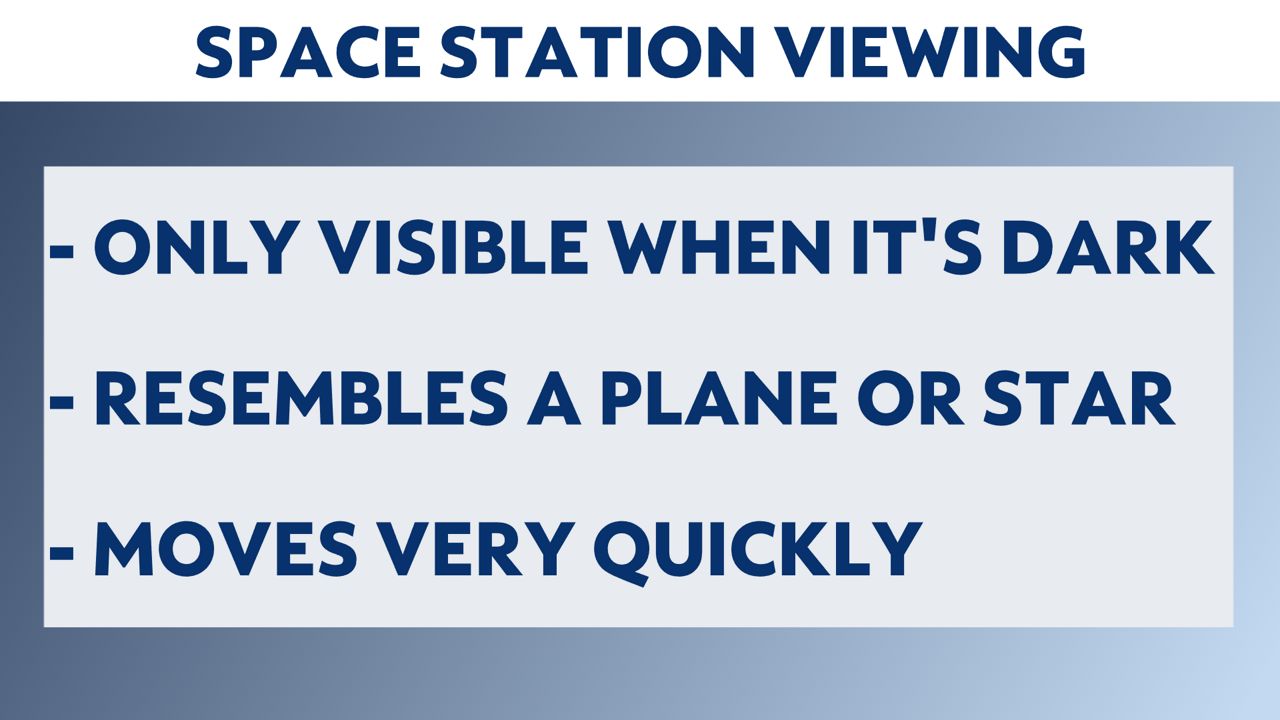
NASA's Spot The Station has a live, interactive map to track the ISS in real-time and provides a list of sighting opportunities based on your location.
Using Milwaukee, Wis. as an example, the chart below shows a date and time when the ISS will pass over, how long it will be visible, the maximum height it will reach above the horizon and where it will appear and disappear.
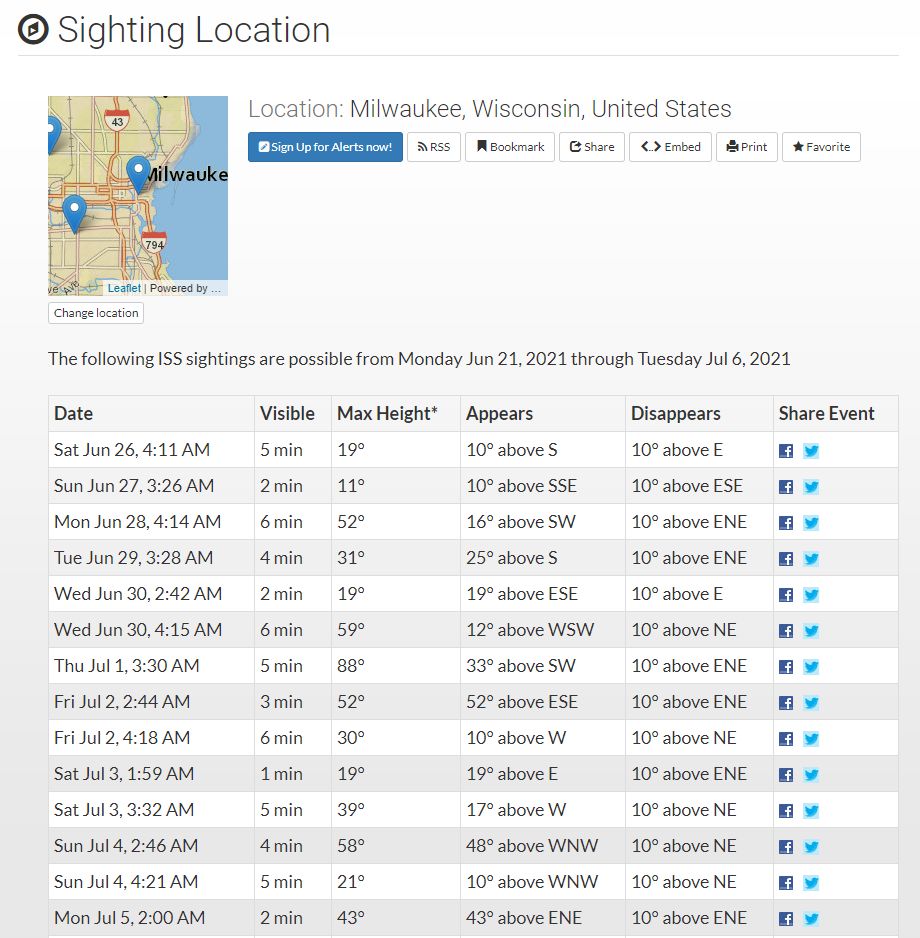
Even though it appears from the list above that the ISS can be seen every day, remember that you will only be able to see it when that maximum height is at least 40 degrees above the horizon. While that limits the instances when the ISS will be visible, there are usually still several opportunities within any given week to try to spot it as it zips across the sky.
